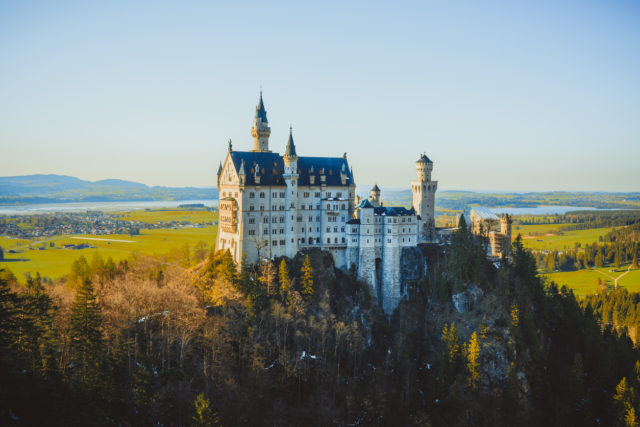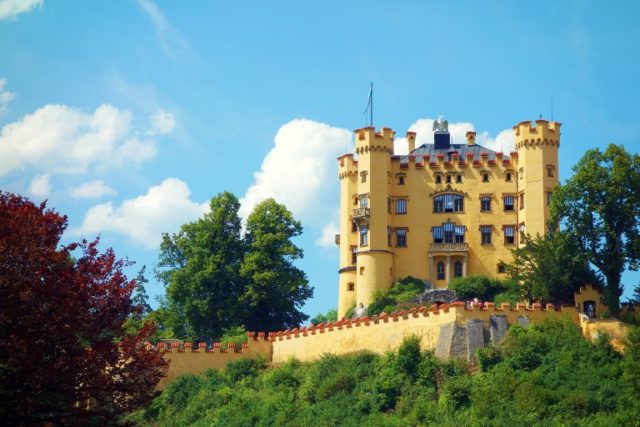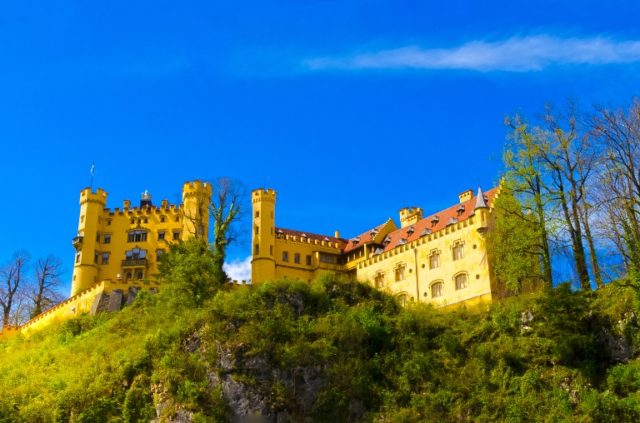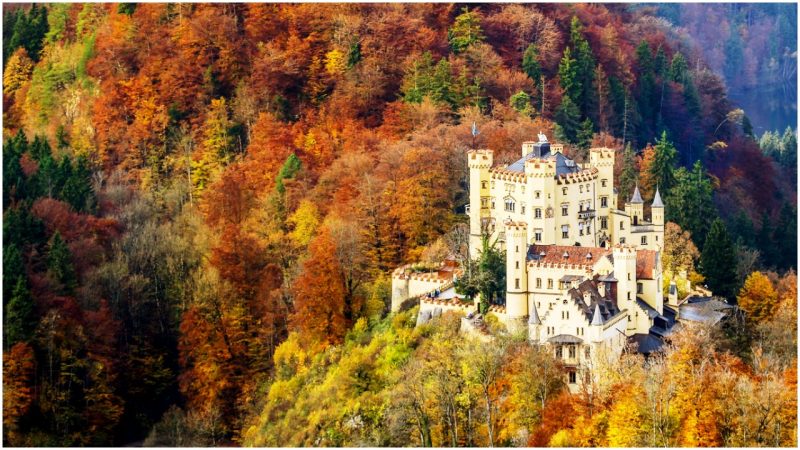The German state of Bavaria is famous for its fairytale castles and enchanting palaces. Its nobility did not hesitate to commission the greatest architects and artisans to build residences fit for kings. The interiors of these residences were enriched with magnificent frescoes, fine furniture, and extraordinary ornaments. Luckily, many of these buildings are well preserved to this day, providing a glimpse of the glamorous lifestyle the wealthy and powerful once had.
One is Schloss Hohenschwangau or Hohenschwangau Castle. It is constructed in an idyllic place on top of a hill surrounded by the Alps and overlooking the Hohenschwangau Village. For years, the castle has been overshadowed by the nearby Neuschwanstein Castle; however, lately, many visitors have claimed that Hohenschwangau Castle is just as beautiful as the famous Neuschwanstein Castle, if not even more so.
The construction of the Hohenschwangau Castle began in 1832 and was initiated by the Bavarian Crown Prince Max, who would later become King Maximilian of Bavaria, the father of Ludwig II, known for building the Neuschwanstein Castle. However, King Maximilian didn’t just randomly pick the place for his castle. There was already the ruins of an existing castle on top of the hill dating back to the 12th century.
The ruined castle was once home to the Schwangau Knights and was known as the Fortress Schwanstein. But when the last of them passed away in the 16th century, for a short period it was the residence of Counselor Johann von Paumgartner zu Paumgarten, who renamed it to Schloss Hohenschwangau. After that, the castle was neglected. And later, the Napoleonic Wars turned the castle into the ruin that caught the eye of the Prince.

The idea of the Prince was to build a romantic castle with characteristic Gothic elements. Many great artists were commissioned for the project, but the design plan and most of the decoration of the walls were entrusted to Domenico Quaglio, an Italian painter who was also a great architect. He turned what was known to be the drinking hall of the castle into a beautiful chapel. Decorative motifs from the Orient are also included in the interior, especially noticeable in the Queen’s bedroom.
The interior walls and ceilings are painted with scenes from German folklore and medieval legends. The swan was a heraldic animal of the Schwangau Knights and the King incorporated it in almost every ornamentation of the castle: from the impressive silver chandelier adorned with swans to spectacular scenes of the swan knight Lohengrin that decorate the room known as the Hall of the Swan Knight.

Lohengrin is a character from the Grail legends that would later appear in Wagner’s famous opera. Interestingly, of all the royal residences, Richard Wagner has only visited Hohenschwangau Castle and stayed in the room whose walls are decorated with scenes from the life of Authari, the King of Langobards, hence its name the Authari Room.
The swan motif is also present in the beautiful gardens that surround the castle. As well as the castle, the gardens were also created by Domenico Quaglio. The highlight of the gardens is, of course, the swan fountain, but that is not the only fountain. Several others are built in the greenery, including the Lion Fountain whose design is influenced by the fountain in the Palace of the Lions in Alhambra, Spain.

The construction of the castle lasted approximately 10 years. Once it was completed, Ludwig I, Maximilian’s father, visited the residence for the first time. He was impressed by its beauty and described it as “truly a fairytale castle.” The castle was a summer residence for the royal family and both Ludwig and his brother Otto spent much of their childhood here.
In 1864 King Maximilian passed away, and his son Ludwig moved into the castle. During the construction of Neuschwanstein Castle, he lived here because he could supervise the construction of his new residence from the castle. For the purpose, he even had a golden telescope that today is on display in one of the rooms in Hohenschwangau Castle. Since 1912, the enchanting castle has been open to the public and to this day remains one of the most beautiful castles in the world.
